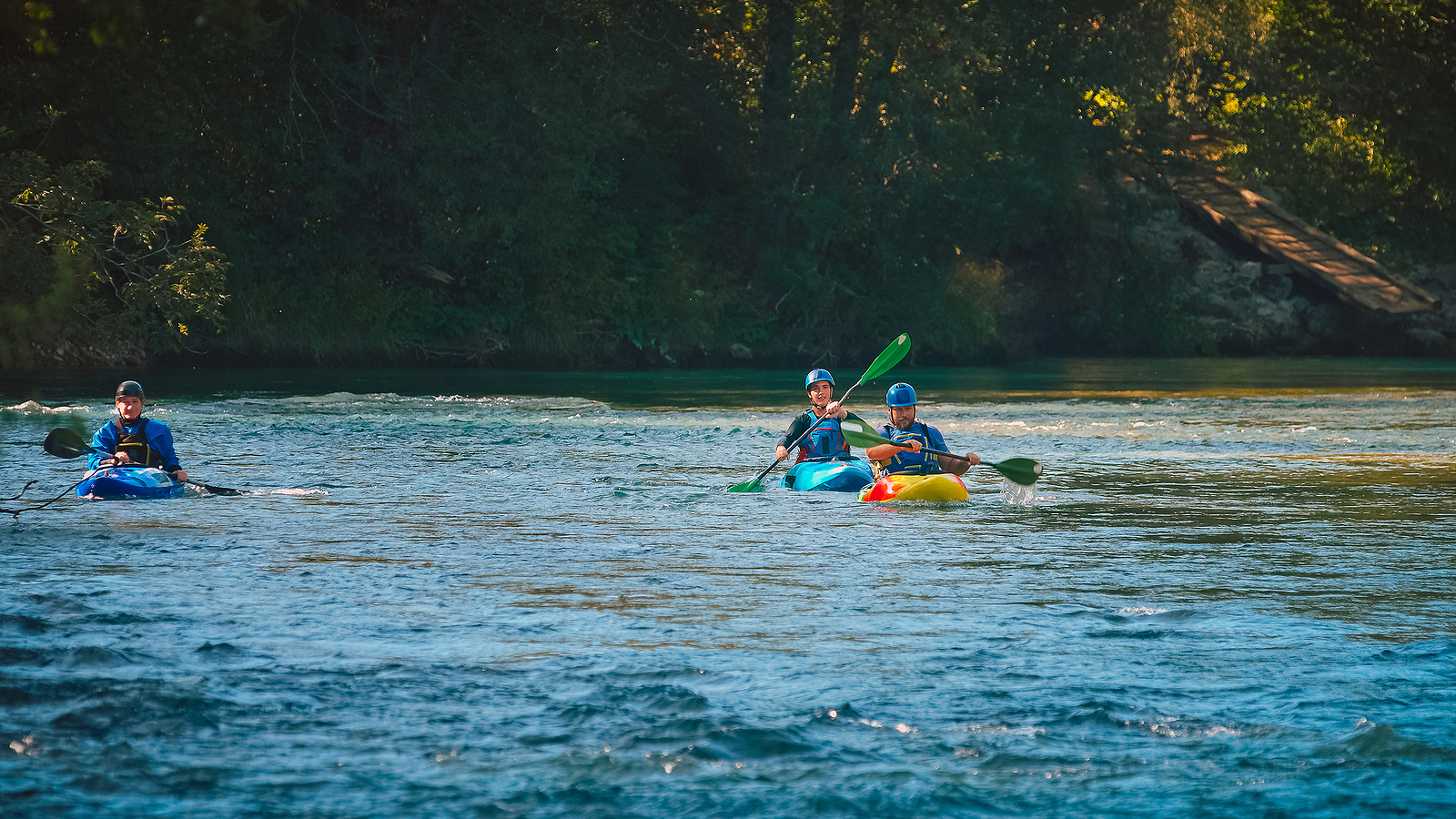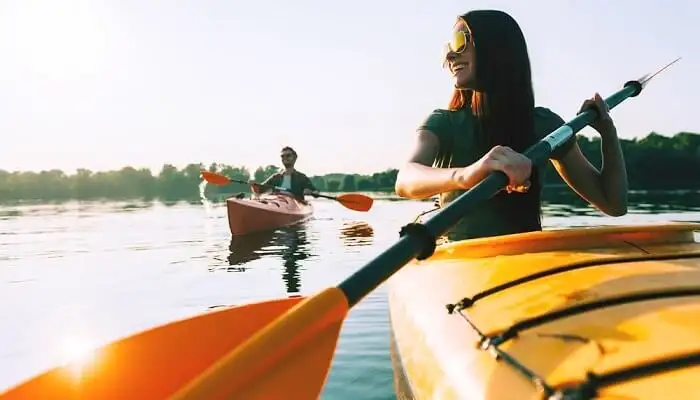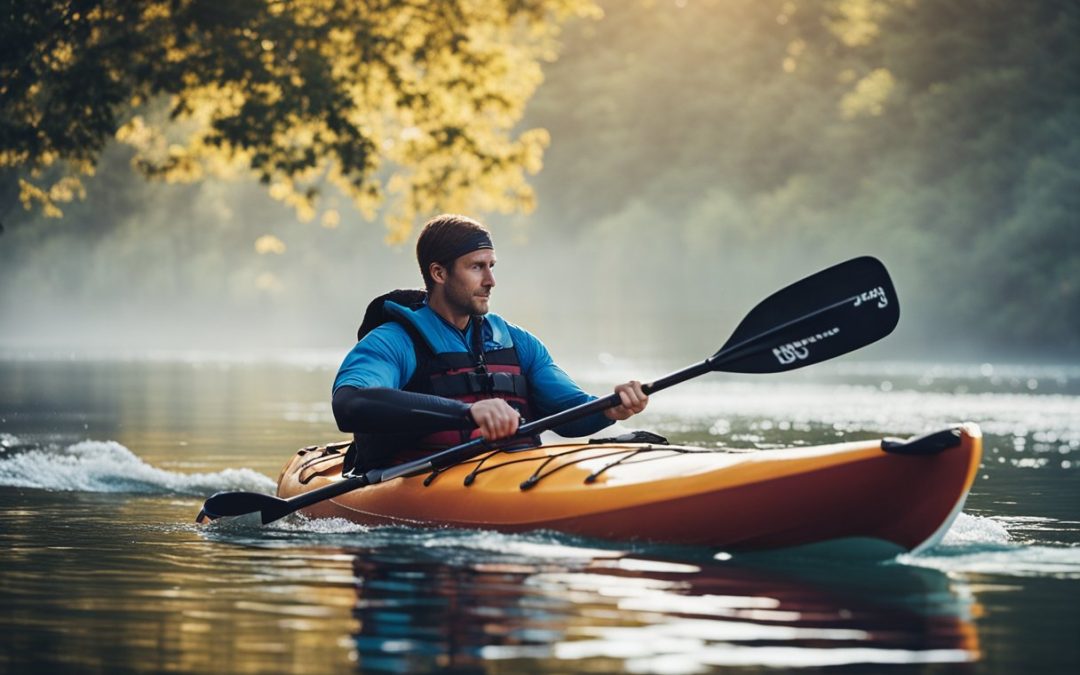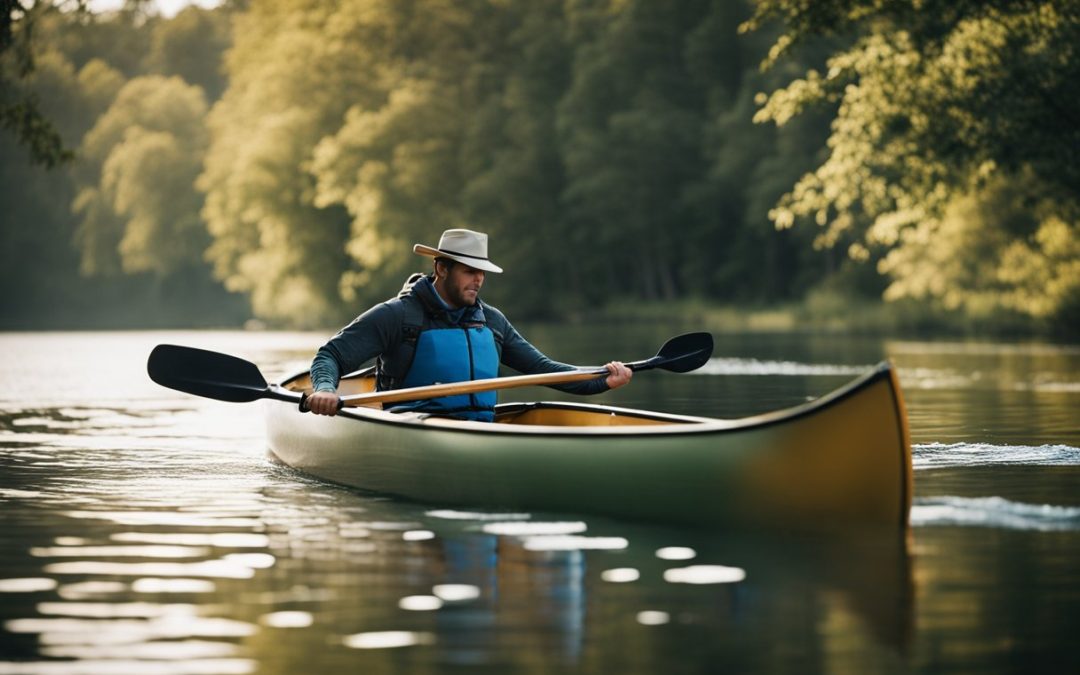Kayaking 101: How to Get Into and Out of a Kayak with Ease
Kayaking is a fun and adventurous sport that many people enjoy. It is a great way to explore the outdoors, exercise, and spend time with friends and family. However, getting into and out of a kayak can be challenging, especially for beginners. In this article, we will provide some tips and tricks on how to get into and out of a kayak safely and easily.
Understanding the basics of kayaking is essential before getting into the water. Choosing the right kayak and proper kayaking gear are also important factors. Once you have the right equipment, it’s time to get in the kayak. Different techniques exist to get into a kayak, from straddling to sidesaddle. Each method has advantages and disadvantages, and it’s up to the kayaker to choose the one that works best for them.
Getting out of a kayak can be even more challenging than getting in. It’s important to do it safely to avoid any injuries. There are different techniques to get out of a kayak, such as straddling or using the paddle for support. This article will explain how to get in and out of a kayak safely and easily, so you can enjoy your kayaking experience to the fullest.
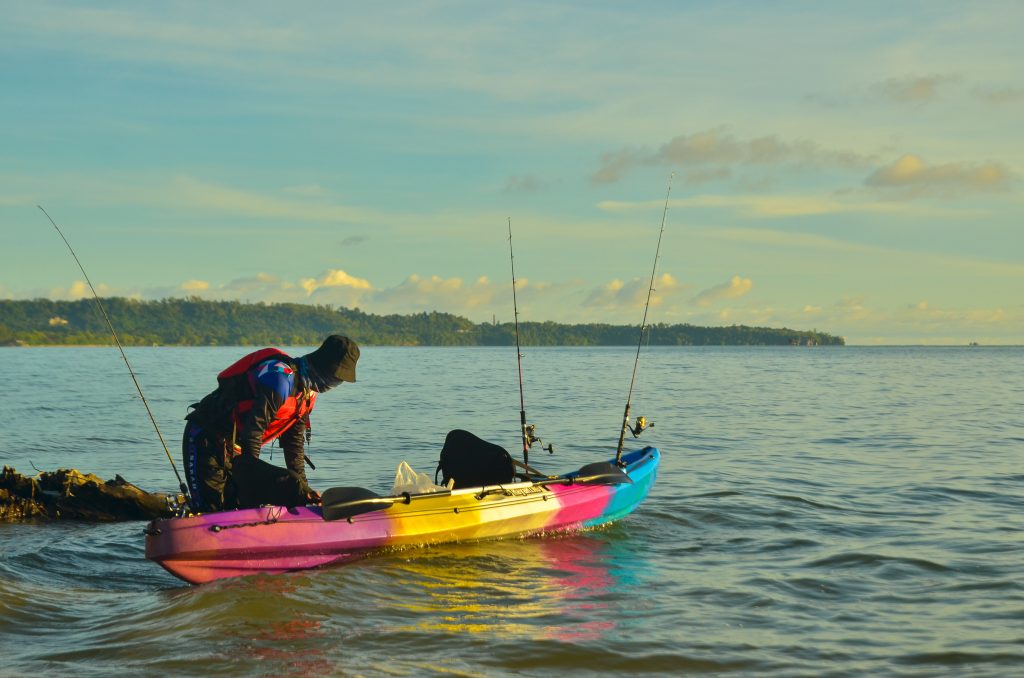
Key Takeaways
- Understanding the basics of kayaking is essential before getting into the water.
- Choosing the right kayak and proper kayaking gear are important factors to consider.
- There are different techniques to get into and out of a kayak, and it’s up to the kayaker to choose the one that works best for them.
Understanding Kayaking Basics
Kayaking is a popular water sport requiring a certain skill and technique. Before getting into the kayak, it is important to understand some basic principles of kayaking.
Types of Kayaks
Kayaks come in different shapes and sizes, each designed for a specific purpose. The most common types of kayaks are:
- Sit-on-top Kayaks: These kayaks have an open cockpit design and are easy to get in and out of. They are ideal for recreational use and are suitable for beginners.
- Sit-in Kayaks: These kayaks have an enclosed cockpit designed for more advanced users. They offer better speed and maneuverability but can be difficult to get in and out of.
- Inflatable Kayaks: These are durable materials that can be inflated and deflated. They are ideal for those who have limited storage space or transport options.
Getting In and Out of a Kayak
Getting in and out of a kayak can be tricky, especially for beginners. Here are some tips to make the process easier:
- Position the kayak parallel to the shore, with the bow facing the water.
- Place the paddle across the kayak, behind the cockpit.
- Sit on the edge of the kayak with your feet in the water.
- Slowly slide into the cockpit, keeping your weight centered.
- Once seated, adjust your feet and legs to a comfortable position.
To get out of the kayak, reverse the process:
- Paddle to the shore and position the kayak parallel to the shore.
- Place the paddle across the kayak, behind the cockpit.
- Slowly slide out of the cockpit, keeping your weight centered.
- Stand up and step out of the kayak, one foot at a time.
Paddling Techniques
Paddling is an essential part of kayaking. Here are some basic paddling techniques:
- Hold the paddle with both hands, with your arms slightly bent.
- Keep your hands shoulder-width apart, with your knuckles facing up.
- Use a forward stroke to move the kayak forward. Dip the paddle into the water, and pull it back towards your hip.
- Use a reverse stroke to move the kayak backward. Dip the paddle into the water, and push it away from your hip.
- Use a sweep stroke to turn the kayak. Dip the paddle into the water, and sweep it in a wide arc away from the kayak.
By understanding these basic principles of kayaking, beginners can enjoy a safe and enjoyable kayaking experience.

Choosing the Right Kayak
When choosing the right kayak, there are a few things to consider. Kayaks come in different shapes and sizes, and selecting the right one is crucial for safety and enjoyment on the water.
Kayak Type
There are two main types of kayaks: sit-in and sit-on-top. Sit-in kayaks provide more protection from the elements and are better suited for colder waters. Sit-on-top kayaks are more open and allow easier entry and exit, making them a good option for warm weather and calm waters. It’s important to consider where and how the kayak will be used when deciding between the two types.
Kayak Size and Shape
Kayaks come in various sizes and shapes, each designed for a specific purpose. Longer kayaks are faster and more efficient, while shorter kayaks are more maneuverable. Wider kayaks are more stable, while narrower kayaks are faster. It’s important to consider the intended use of the kayak when selecting the size and shape.
Kayak Material
Kayaks are made from different materials, including plastic, fiberglass, and carbon fiber. Plastic kayaks are more affordable and durable but heavier. Fiberglass and carbon fiber kayaks are lighter, faster, more expensive, and less durable. When selecting the material, it’s important to consider the budget and intended use.
Kayak Features
Kayaks have various features, including storage compartments, footrests, and adjustable seats. It’s important to consider the desired features when selecting a kayak. For example, storage compartments may be a priority if the kayak is used for fishing. An adjustable seat may be necessary for comfort if the kayak is used for long trips.
Overall, selecting the right kayak involves considering the type, size, shape, material, and features. Considering these factors, one can choose a safe, enjoyable, and well-suited kayak for their needs.
Proper Kayaking Gear
Regarding kayaking, having the right gear is essential for safety and comfort. Here are some of the key items that every kayaker should have:

Personal Flotation Device (PFD)
A PFD is a must-have item for kayaking. It is designed to keep you afloat if you fall out of your kayak. Choose a PFD that fits properly and is comfortable to wear for extended periods.
Kayak
Of course, you’ll need a kayak to go kayaking. Many different types of kayaks are available, so choose one appropriate for your skill level and the type of water you’ll be kayaking in. Sit-on-top kayaks are popular for beginners, while more experienced kayakers may prefer a sit-in kayak.
Paddle
A good kayak paddle is essential for efficient and comfortable kayaking. Look for a paddle that is the right length for your height and the width of your kayak. It should also be lightweight and easy to maneuver.
Spray Skirt
If you’re kayaking in rough water or cold weather, a spray skirt can help keep you dry and warm. It fits around the cockpit of your kayak and creates a seal to prevent water from entering.
Clothing
Wearing the right clothing is important for both comfort and safety while kayaking. Choose clothing that is lightweight, quick-drying, and provides sun protection. Avoid cotton clothing, as it can become heavy and uncomfortable when wet.
Footwear
Wearing the right footwear is important for both comfort and safety while kayaking. Look for shoes that are lightweight, quick-drying, and provide good traction on wet surfaces. Water shoes or sandals with straps are a good choice.
You can enjoy a safe and comfortable kayaking experience with the proper gear.
Getting Into a Kayak
Kayaking is a fun and exciting way to explore the water. However, getting into a kayak can be tricky, especially for beginners. This section will discuss the steps to follow when getting into a kayak.
Selecting a Suitable Location
Before getting into a kayak, it is important to select a suitable location. The location should have calm and shallow water, with no rocks or other obstacles that could damage the kayak. Additionally, the location should be free from strong currents and waves, as these can make it difficult to get into the kayak.
Stabilizing the Kayak
The paddler should place the kayak parallel to the shore to stabilize it. They should then ensure that the kayak is properly balanced before getting in. This can be done by placing one hand on the kayak’s cockpit rim and the other hand on the opposite side of the kayak. The paddler should gently lower themselves into the kayak while keeping their weight balanced.
Proper Seating Position
Once in the kayak, the paddler should ensure that they are in a proper seating position. This means that their back should be straight, their feet should be flat on the footrests, and their knees should be slightly bent. Additionally, the paddler should ensure that their hips are snugly fit into the kayak’s seat.
In summary, getting into a kayak requires selecting a suitable location, stabilizing the kayak, and assuming a proper seating position. Following these steps, the paddler can ensure a safe and enjoyable kayaking experience.
Paddling Techniques
Kayaking is a fun and exciting activity that requires physical strength, good technique, and knowledge of the water. This section will discuss some of the essential paddling techniques you need to master to maximize your kayaking experience.
Forward Stroke
The forward stroke is the most fundamental in kayaking. It is the stroke that propels the kayak forward and is used to maintain a straight line. To perform the forward stroke, the kayaker should:
- Sit straight with their feet on the footrests and their knees slightly bent.
- Hold the paddle with both hands, with their hands shoulder-width apart.
- Place the paddle in the water with the blade fully submerged.
- Pull the paddle back towards their hip, keeping the blade parallel to the kayak.
- Rotate their torso slightly to add power to the stroke.
- Repeat the stroke on the other side of the kayak to maintain a straight line.
Turning Stroke
The turning stroke is used to turn the kayak left or right. There are several ways to perform the turning stroke, but the sweep stroke is the most common. To perform the sweep stroke, the kayaker should:
- Hold the paddle with both hands, with their hands shoulder-width apart.
- Place the paddle in the water at the front of the kayak, with the blade angled away from the kayak.
- Sweep the paddle in a wide arc toward the back of the kayak while rotating the torso in the direction of the turn.
- The kayak should turn in the direction of the sweep stroke.
Stopping Stroke
The stopping stroke is used to slow down or stop the kayak. To perform the stopping stroke, the kayaker should:
- Hold the paddle with both hands, with their hands shoulder-width apart.
- Place the paddle in the water at the side of the kayak, with the blade angled towards the kayak.
- Push the paddle away from the kayak while rotating the torso to add power to the stroke.
- The kayak should slow down or stop.
By mastering these three essential paddling techniques, kayakers can enjoy a safe and enjoyable kayaking experience. Always wear a life jacket and follow all safety guidelines when kayaking.
Getting Out of a Kayak
Getting out of a kayak can be just as important as getting in, especially regarding safety. Here are some steps to follow to ensure a smooth and safe exit.
Approaching the Shore
When approaching the shore, the kayaker should paddle towards the shore at a slow and steady pace. The kayaker should aim to land parallel to the shore. Once the kayak is close enough to the shore, the kayaker should stop paddling and let the kayak drift towards the shore.
Stabilizing for Exit
Before exiting the kayak, the kayaker should stabilize it to prevent it from tipping over. To do this, the kayaker should place the paddle across the kayak, with one end resting on the shore and the other resting on the kayak. The kayaker can also use a partner to hold the kayak steady.
Exiting Safely
To exit the kayak safely, the kayaker should follow these steps:
- Bring the knees together and place both feet on the kayak’s floor.
- Place one hand on the paddle and the other on the side of the kayak to stabilize the kayak.
- Slowly lift one leg from the kayak and place it on the shore.
- Push off with the other leg to lift the body out of the kayak.
- Stand up on the shore and move away from the kayak to prevent it from tipping over.
It is important to remember always to exit the kayak slowly and carefully to prevent injury. By following these steps, kayakers can safely and easily exit their kayaks.
Post Kayaking Tips
After a fun day of kayaking, a few things should be done to ensure that the kayak is well-maintained and ready for the next adventure. This section will cover two essential post-kayaking tips: cleaning and storing the kayak.
Cleaning the Kayak
Cleaning the kayak after use is crucial to prevent the buildup of dirt, salt, and other debris that can damage the kayak over time. Here are some steps to follow when cleaning a kayak:
- Rinse the kayak with fresh water to remove any dirt or salt water.
- Use mild soap and a soft sponge or cloth to clean the kayak’s surface.
- Pay attention to the kayak’s crevices and hard-to-reach areas.
- Rinse the kayak thoroughly with fresh water and dry it with a clean towel.
It’s important to note that harsh chemicals should not be used when cleaning a kayak, as they can damage its surface. Additionally, abrasive materials like steel wool should be avoided.
Storing the Kayak
Proper kayak storage is essential to ensure it remains in good condition and is ready for the next adventure. Here are some tips to follow when storing a kayak:
- Store the kayak in a dry, cool, and shaded area.
- Keep the kayak off the ground to prevent damage to the hull.
- Cover the kayak with a tarp or cover to protect it from the elements.
- If storing the kayak outside, ensure it’s secured to prevent theft.
It’s also essential to regularly check the kayak’s straps and other accessories to ensure they’re in good condition and replace them if necessary.
By following these post-kayaking tips, kayakers can ensure their kayak remains in good condition and ready for the next adventure.

Frequently Asked Questions
How to get into a kayak for beginners
For beginners, the easiest way to get into a kayak is by straddling it. Stand with your feet on either side of the cockpit and your body above the seat. Lower yourself into a squat position and hold onto the cockpit coaming of the kayak for support and balance. Then, slide your legs into the kayak and sit on the seat. Ensure your feet are on the footrests, and adjust the backrest to your comfort level.
How to get in a kayak in deep water
Getting into a kayak in deep water can be challenging, but it is possible with the right technique. First, position the kayak parallel to the shore and hold onto the cockpit coaming with one hand. Then, place your other hand on the paddle and use it as an outrigger to stabilize yourself. Slowly lower yourself into the kayak, keeping your weight centered and your eyes on the horizon. Once you are seated, adjust your position and begin paddling.
Kayak exit for seniors
Seniors may find it difficult to exit a kayak due to limited mobility or balance. The best way for seniors to exit a kayak is by reversing the entry process. First, position the kayak parallel to the shore and hold onto the cockpit coaming with one hand. Then, place your other hand on the paddle and use it as an outrigger to stabilize yourself. Slowly slide your legs out of the kayak and stand up, using the paddle for support if necessary.
How to get in and out of a kayak with bad knees
For those with bad knees, minimizing joint stress when getting in and out of a kayak is important. To get into a kayak, sit on the edge of the cockpit and swing your legs into the kayak one at a time. Use your hands to push yourself into a seated position. To exit the kayak, reverse the process and swing your legs out of the kayak one at a time. Use your hands to push yourself up and stand up slowly.
How to launch a kayak without getting wet
Launching a kayak without getting wet is possible with the right technique. First, position the kayak parallel to the shore and hold onto the cockpit coaming with one hand. Then, place your other hand on the paddle and use it as an outrigger to stabilize yourself. Slowly lower the kayak into the water until it is afloat. Then, step into the kayak one foot at a time and sit on the seat. Adjust your position and begin paddling.
What is the proper way to get in and out of a kayak?
The proper way to get in and out of a kayak depends on the situation and the individual’s abilities. However, some general tips include keeping your weight centered, using your hands for support, and taking your time to avoid injury. Adjusting the kayak to your comfort level and wearing appropriate safety gear, such as a life jacket, is also important.

